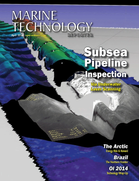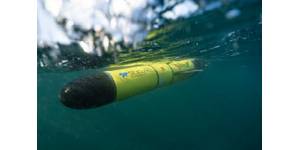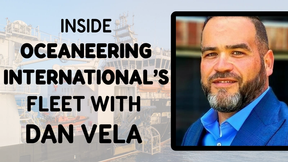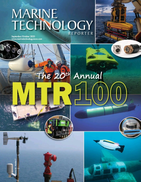Imenco & High Resolution Subsea Digital Imaging
By Marine Technology Reporter
Digital transmission is something most of us use - knowingly or otherwise - everyday, whether it be smart phones, tablets or via other electronic devices. The subsea industry is the exception with its reliance on analogue (SD or Standard Definition) cameras in the belief that analogue systems have sufficiently low latency.
Latency is the time it takes for the signal to travel from the subsea camera to the operators screen, via the ROV umbilical (wire). For the signal to make this journey, it needs to be converted to an analogue signal in the camera before travelling up the umbilical. Delays can be unacceptable when controlling manipulators on an ROV.
Imenco said it is about to challenge the established standards with the introduction of an all-digital system that will have considerable ramifications in the way the subsea industry carries out inspection tasks.
The electronics industry worldwide is seeing the availability of analogue modules diminishing rapidly. Imenco recognized this trend in 2012 and, having identified the enormous performance improvements that could be accrued through an all-digital system, have developed a new hardware and software data acquisition platform that will be launched later this year. The solution, and all of Imenco’s future systems, will be run with Ethernet using the latest TCP/IP Standard.
With the PC inside the camera rather than on the surface customers will be able to tailor how they use the subsea system to meet their own specific demands using Apps supplied by Imenco or written specifically for their need.
Imenco has designed and written the software providing greater control over the image, lower latency and the ability to deliver potential communications activity currently unachievable in the subsea arena. The most exciting element is that subsea devices will be able to automatically talk to each other.
The software driven display system also has advantages over the typical operations in the ROV control room. Imenco’s all-digital system will allow metadata to be used correctly during the image gathering process, with the operator using menu-driven controls in the background providing the ability to write notes and attach files to the image directly. One of the most useful properties of cameras run over TCP/IP will be the capability to potentially communicate wirelessly making the compatibility with the idea of a subsea internet in general, and specific application in particular, involving remote or stand-alone cameras increasingly possible.
[email protected]
www.imenco.com
(As published in the April 2014 edition of Marine Technology Reporter - www.seadiscovery.com)



 August 2025
August 2025



